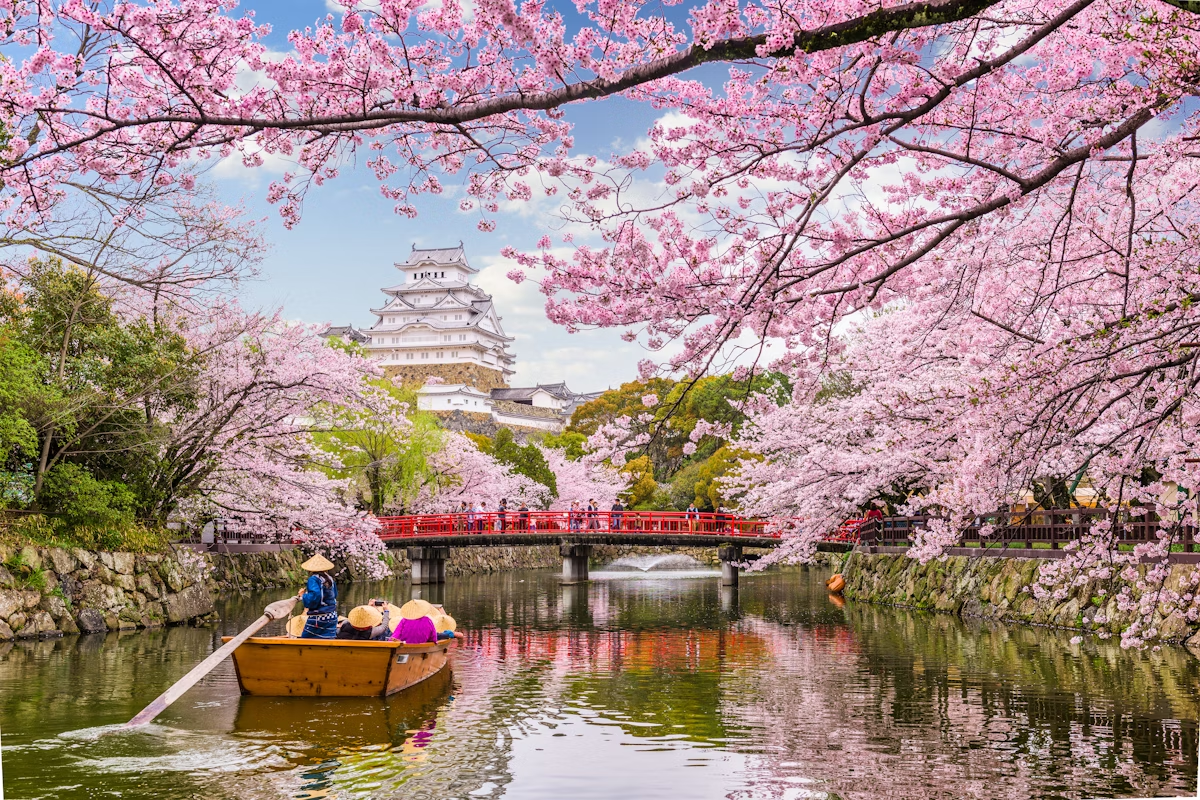Exploring the Tradition of Japanese Cherry Blossom Festivals
- By -Maria Mash
- Posted on
- Posted in Culture
Cherry blossoms, or “sakura,” are an iconic symbol of Japan, renowned for their breathtaking beauty and cultural significance. Blooming in early spring, these delicate pink and white flowers have been celebrated for centuries as a metaphor for the transient nature of life. In Japanese culture, cherry blossoms embody the concept of “mono no aware,” which means an awareness of the impermanence of all things. The fleeting bloom of sakura serves as a reminder to cherish the present moment, making cherry blossom festivals, or “hanami,” a time of deep reflection and appreciation.

Origins of Cherry Blossom Festivals
The tradition of hanami, which means “flower viewing,” dates back over a thousand years to the Heian period (794-1185). Initially, it was a practice among the Japanese aristocracy, who would hold elaborate parties under the blooming cherry trees to celebrate the arrival of spring. Over time, the tradition spread to the common people, becoming a nationwide cultural event. Today, hanami is an integral part of Japanese culture, with people of all ages gathering in parks, gardens, and along riverbanks to enjoy the blossoms, share food and drinks, and celebrate the beauty of spring.
Hanami: A Time for Community and Celebration
Cherry blossom festivals are more than just an opportunity to view beautiful flowers; they are a time for community, connection, and celebration. Families, friends, and colleagues come together for hanami picnics, often spreading out blue tarps under the sakura trees to enjoy food, drink, and conversation. Traditional Japanese foods such as “bento” boxes, “sakura mochi” (cherry blossom rice cakes), and seasonal sake are enjoyed while people relax and take in the beauty of the blossoms. This communal aspect of hanami fosters a sense of unity and shared appreciation for nature’s fleeting beauty.
Symbolism and Reflection in Hanami
Hanami is also a time for contemplation and reflection. The brief bloom of the cherry blossoms, which lasts only about a week or two, serves as a poignant reminder of life’s impermanence. This symbolism resonates deeply in Japanese culture, which places a strong emphasis on the appreciation of nature’s beauty and the transient moments of life. During hanami, people are encouraged to reflect on their own lives, consider their paths forward, and appreciate the beauty and fragility of each moment.
Popular Cherry Blossom Viewing Spots
Japan is home to numerous iconic cherry blossom viewing spots, each with its own unique charm. Some of the most famous locations include:
- Ueno Park, Tokyo: One of Tokyo’s most popular hanami spots, Ueno Park boasts over 1,000 cherry trees that bloom in a spectacular display each spring. The park becomes a hub of activity, with both locals and tourists enjoying the vibrant atmosphere.
- Maruyama Park, Kyoto: Known for its historic ambiance, Maruyama Park offers a serene setting for hanami under its famous weeping cherry tree, “Gion Shidare-zakura.” The park is especially beautiful when illuminated at night, creating a magical atmosphere.
- Himeji Castle, Hyogo: Himeji Castle is a stunning backdrop for cherry blossom viewing, with over 1,000 cherry trees surrounding the iconic castle. The combination of the historic architecture and delicate cherry blossoms makes it a must-visit spot.
- Hirosaki Castle, Aomori: Hirosaki Castle is famous for its cherry blossom festival, featuring thousands of sakura trees, cherry blossom tunnels, and even petal-filled moats. It offers one of the most picturesque settings in Japan.
Cultural Activities and Events
During cherry blossom festivals, various cultural activities and events are held to enhance the hanami experience. Traditional music performances, tea ceremonies, and kimono parades are often organized in popular hanami locations. Nighttime cherry blossom viewings, known as “yozakura,” are also a common tradition, where illuminated cherry trees create a stunning visual display against the night sky. These events not only celebrate the beauty of sakura but also provide an opportunity for people to engage with Japanese culture, art, and traditions in a meaningful way.
Global Influence and Appreciation
The tradition of cherry blossom festivals has spread beyond Japan, influencing many countries worldwide. Cities like Washington, D.C., Vancouver, and Seoul now host their own cherry blossom festivals, often inspired by Japan’s hanami culture. These international festivals have become popular events, attracting visitors who wish to celebrate the beauty of spring and the symbolic significance of cherry blossoms. This global appreciation highlights the universal appeal of hanami and its ability to foster cross-cultural connections.
Conclusion
The tradition of Japanese cherry blossom festivals, or hanami, is a celebration of nature’s fleeting beauty and a reminder to appreciate life’s impermanent moments. With deep cultural roots, hanami continues to bring people together in a spirit of reflection, community, and joy. Whether in Japan or around the world, cherry blossom festivals inspire people to connect with nature, cherish their relationships, and find beauty in the present moment. As the sakura blooms each spring, it serves as a timeless symbol of renewal, hope, and the delicate balance of life.



